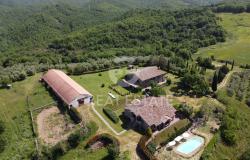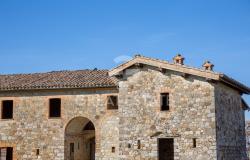Call it a one-of-a-kind museum: the Museum of Mummies in the quaint little town of Ferentillo, in Umbria’s verdant Valnerina, does not display your usual collection of works of art, but rather, naturally mummified bodies. Don’t shriek in horror – it is actually quite fascinating (many people must agree since this is one of Umbria’s most visited museums).
The museum is located inside a Romanesque crypt upon which the 16th century Church of Santo Stefano was erected. The crypt was used to bury the bodies of the local townspeople until 1806, when the Napoleonic decree of Saint Claud forbade all burials within the cities’ walls. The decree mandated that all bodies buried in the churches be exhumed. In the Church of Santo Stefano, this brought to a puzzling discovery: skeletal bodies perfectly preserved, often still possessing their teeth, hair and body hair, some of them still wearing the clothes they had on when they died. Their skin resembled antique parchment.
What caused their preservation? Many scientists have studied this phenomenon. While there is no universal consensus, it is thought that the natural mummification here has been due to three factors: the type of soil, rich in iron, aluminium silicates, sulfate, calcium, magnesium and ammonia nitrates; the micro-climate inside the crypt, which, through the ventilation provided by the three lancet windows, created a particular temperature and humidity; and the presence of micro-organisms on the skin of the mummies, which, feeding on the decomposing substances of the corpses, caused them to dry very rapidly. Consider that, when birds or other animals die in the crypt, the natural mummification still occurs today.
While a large number of mummified bodies was discovered in the 19th century, only about 25 remain well preserved today because of the initial lack of interest, which resulted in negligence and thefts. They are on display behind glass cases, and you can learn their stories when you take a guided visit of the museum.
For more information, click here.













